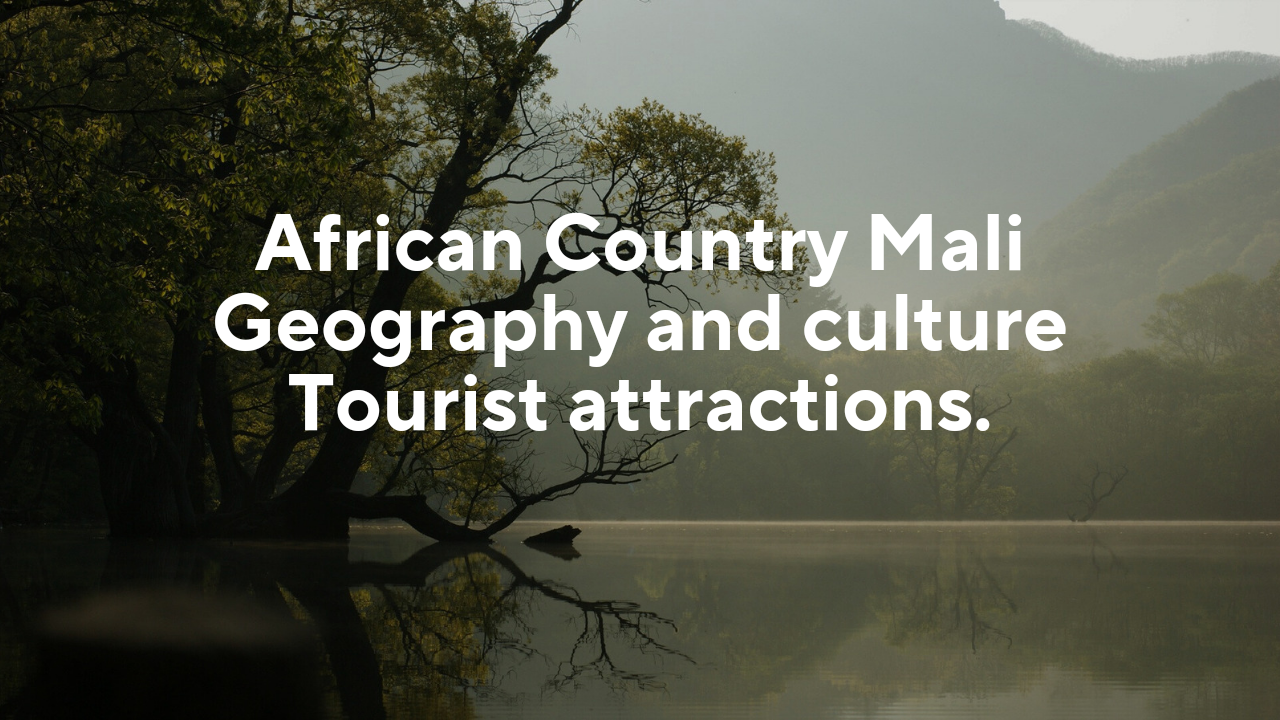Nestled in the heart of West Africa, Mali is a country that boasts a rich tapestry of culture, history, and natural beauty. From the legendary city of Timbuktu to the vibrant rhythms of its music, Mali is a nation that captivates the imagination and offers a unique blend of tradition and modernity. In this blog, we will explore the diverse facets of Mali, from its historical significance to its contemporary challenges and the resilience of its people.
Capital city of mali:
The capital and largest city of Mali is Bamako, situated in the southwestern part of the country along the Niger River. It serves as the political, economic, and cultural centre of Mali.
Mali Flag:

Geography of mali country:
Location: Mali country.
Mali is situated in the interior of West Africa and is bordered by seven countries: Algeria to the north, Niger to the east, Burkina Faso to the southeast, Ivory Coast to the south, Guinea to the southwest, Senegal to the west, and Mauritania to the northwest.
Landform: Mali country.
The landscape of Mali is predominantly flat, with vast plains and plateaus. The country includes part of the Sahara Desert in the north, which consists of arid and sandy regions.
River Systems: Mali country.
The Niger River, one of the major rivers in Africa, flows through the southwestern part of Mali. The Niger River is essential for agriculture and transportation in the region.
Desert Region: Mali country.
Northern Mali is part of the Sahel region, which is a transitional zone between the Sahara Desert to the north and the savannas to the south. This area is characterised by semi-arid conditions.
Climate: Mali country.
Mali experiences a variety of climates due to its size and diverse topography. The southern part has a tropical climate with a wet season from June to September, while the northern regions are arid with hot temperatures throughout the year.
Natural Resources: Mali country.
Mali is rich in natural resources, including gold, which is a significant contributor to the country’s economy. Other resources include uranium, phosphates, limestone, salt, and hydropower potential from the Niger River.
Wildlife: Mali country.
Mali is home to diverse wildlife, including various species of mammals, birds, and reptiles. National parks and reserves, such as the Boucle du Baoulé National Park, are established to protect and preserve the country’s natural biodiversity.
Cultural Heritage: Mali country.
Mali has a rich cultural heritage, particularly in the city of Timbuktu, which was an important centre of trade, scholarship, and Islamic culture during the mediaeval period.
Culture of Mali:
Ethnic Diversity: Mali country.
Mali is home to various ethnic groups, each with its own distinct traditions, languages, and customs. The Bambara, Fulani, Tuareg, Malinke, and Songhai are among the major ethnic groups in Mali.
Music and Dance: Mali country.
Mali is renowned for its vibrant music scene, and traditional music plays a significant role in the country’s cultural expression. The music is characterised by the use of traditional instruments such as the kora, balafon, and ngoni. The famous Festival au Désert (Festival in the Desert) used to be a major event showcasing traditional and contemporary Malian music.
Art and Craftsmanship: Mali country.
Mali has a long history of artistic expression, seen in traditional crafts such as pottery, weaving, and woodcarving. The ancient city of Timbuktu, once a centre of learning and trade, is also known for its historic manuscripts.
Cuisine: Mali country.
Malian cuisine is diverse and reflects the agricultural abundance of the region. Staples include millet, rice, maize, and sorghum, often served with a variety of sauces and stews. Grilled and roasted meats, especially lamb and chicken, are popular, and the use of spices adds flavour to many dishes.
Festivals and Celebrations: Mali country.
Mali celebrates various festivals that are often tied to agricultural cycles, religious events, and historical commemorations. These festivals are marked by colourful ceremonies, music, dance, and traditional rituals.
Traditional Clothing: Mali country.
Traditional Malian clothing varies among ethnic groups. The brightly coloured boubou, a loose-fitting gown, is commonly worn. The Tuareg people, known for their distinctive indigo-blue clothing and turbans, have a unique style that reflects their nomadic lifestyle.
Social Structure: Mali country.
Mali has a strong sense of community, and social structures often revolve around extended families. Respect for elders is important, and communal values are emphasised.
Religion: Mali country.
Islam is the dominant religion in Mali, and many aspects of daily life, including festivals and social customs, are influenced by Islamic traditions. However, there is also a presence of indigenous African religions and Christian communities.
Timbuktu’s Cultural Heritage: Mali country.
Timbuktu, a city in Mali, was historically a centre of Islamic scholarship and trade. The city has a rich cultural heritage, including ancient mosques, libraries, and manuscripts that are of historical and academic significance.
Language of mali:
The main language of Mali is French. French was inherited from the colonial period when Mali was part of French West Africa. Additionally, there are many indigenous languages spoken in Mali, reflecting its diverse ethnic and cultural composition. Bambara is the most widely spoken indigenous language, and other languages include Fulfulde, Soninke, Tamasheq, and Dogon, among others. The linguistic landscape of Mali is quite diverse due to the presence of numerous ethnic groups with their own languages and dialects.
Some tourist attractions in mali:
Timbuktu (Timbuktu):
Timbuktu is a historic city known for its ancient manuscripts, Islamic architecture, and role as a centre for trade and scholarship.The Djinguereber Mosque, Sankore Mosque, and Sidi Yahya Mosque are UNESCO World Heritage Sites.The city has a rich history as a trading hub along the trans-Saharan trade routes.
Djenne:
Djenne is famous for its Great Mosque, the largest mud-brick building in the world.The city is a UNESCO World Heritage Site and is known for its well-preserved traditional Sudano-Sahelian architecture.
Bamako:
The capital and largest city of Mali, Bamako, offers a mix of modern and traditional attractions.The National Museum of Mali, Bamako Grand Mosque, and the vibrant markets are popular places to explore.
Dogon:
The Dogon people inhabit the Bandiagara Escarpment, a UNESCO World Heritage Site.Visitors can trek through picturesque villages, visit traditional Dogon homes, and experience the unique culture of the Dogon people.
Segou:
Segou is known for its colonial architecture, the Segou Koro Festival celebrating local culture, and the artisan village of Kalabougou known for pottery.
Mopti:
Mopti is a major port town on the Niger River, known for its bustling markets and vibrant atmosphere.Boat trips on the Niger River, exploring the Inner Niger Delta, are popular activities.
The Niger River:
The Niger River, one of Africa’s longest rivers, flows through Mali, offering scenic landscapes and opportunities for boat trips.

